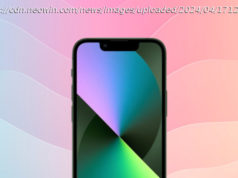Computational modes aren’t just for smartphones, and the micro-four-thirds OM-1 is showing us what could be possible for cameras
I recently tested the OM System OM-1. It’s a serious bit of kit for serious photographers, with a rugged DSLR-style build, an impressive stacked sensor, and excellent lenses. It’s also a flagship camera that will set you back $2,200 / £2,000 / AU$3,300 body-only. Yet something altogether different snuck into the headlines about this new camera – its computational modes. Surely computational photography is for the smaller sensors of supposedly inferior smartphones? Not so. Not only do ‘Computational Modes’ now command a dedicated space within the OM-1’s menu, the handling and output of these modes is improving all the time. It got me thinking – is this a nod to the future for Micro Four Thirds or mirrorless cameras in general? So join my thought train as I unpack what computational photography is, how it’s applied today, and what we might expect to come in ‘proper’ cameras. We all know about Portrait Mode, which has long been the poster child for smartphone computational photography. Without it, my Google Pixel 4a would otherwise be incapable of shooting its flattering portraits with blurry backgrounds. It works by using edge detection, and sometimes depth-mapping, to distinguish a subject from its background and then computationally apply a uniform blur to those surroundings to make your subject pop. While fallible, the Portrait Mode effect is magical and brings big-camera power to our pockets. If I updated my Pixel 4a to Google’s current crop, I’d get Motion Mode too, whereby motion blur can be added to an image, much like what you get by adding an ND (neutral density) filter for long exposure landscapes. You can work things the other way too, by removing unwanted motion blur. Smart stuff, that’s getting ever smarter. But while we tend to associate computational photography with smartphones, Olympus (now OM System) was in fact a pioneer, broadening the application of this tech in its Micro Four Thirds cameras. And the best example of this is its new OM System OM-1. Computational photography allows a camera to do things that would otherwise be impossible due to factors like sensor size limits. And while the Micro Four Thirds sensor of the OM System OM-1 is much larger than the one you’ll find in a smartphone like the Google Pixel 6, it still looks up to the larger-still full-frame.
Домой
United States
USA — software The OM System OM-1 shows computational tricks are the future of mirrorless...






